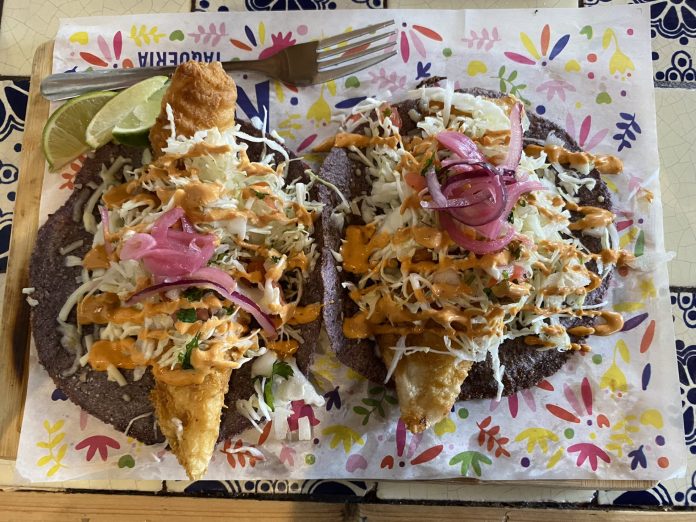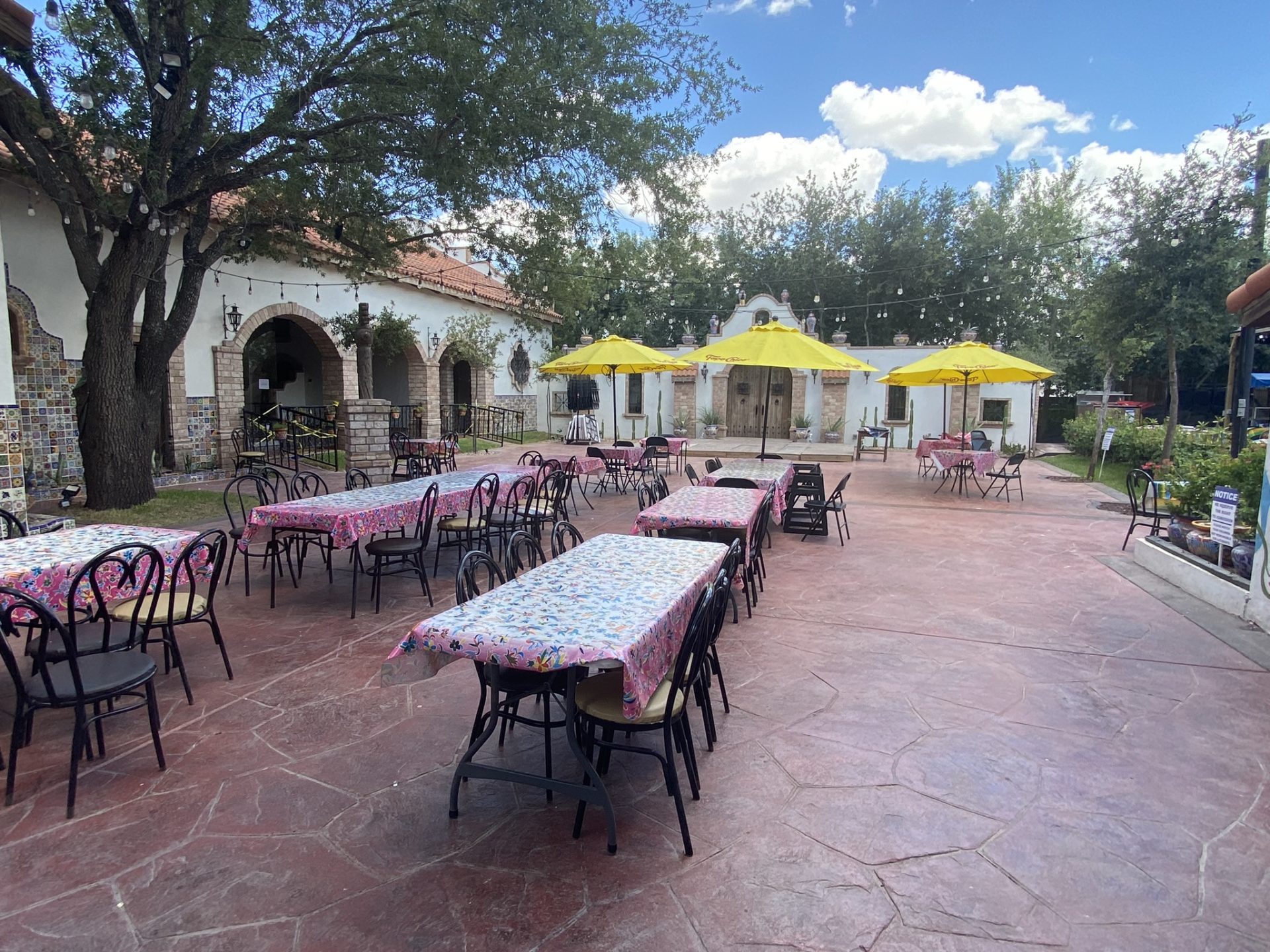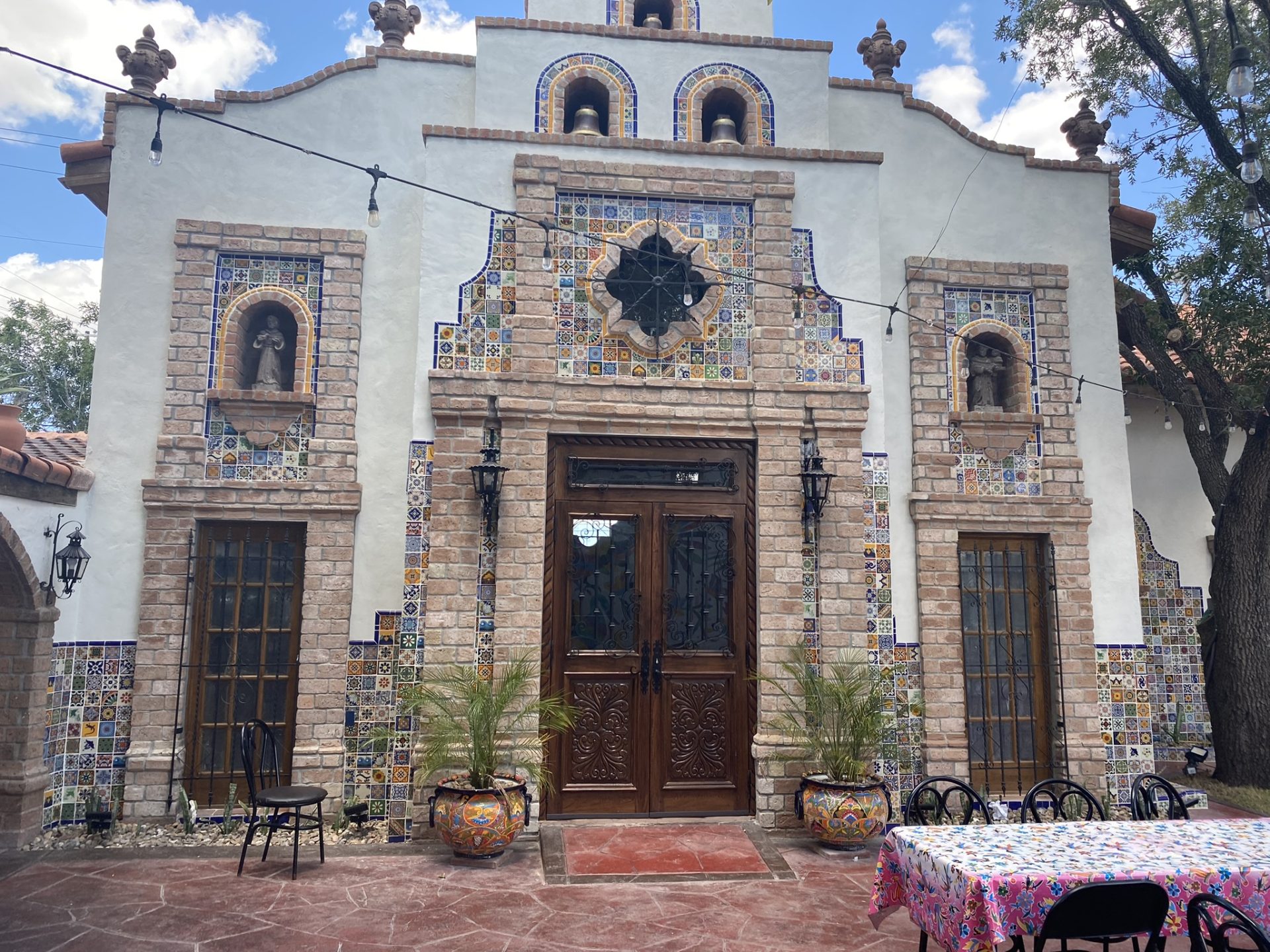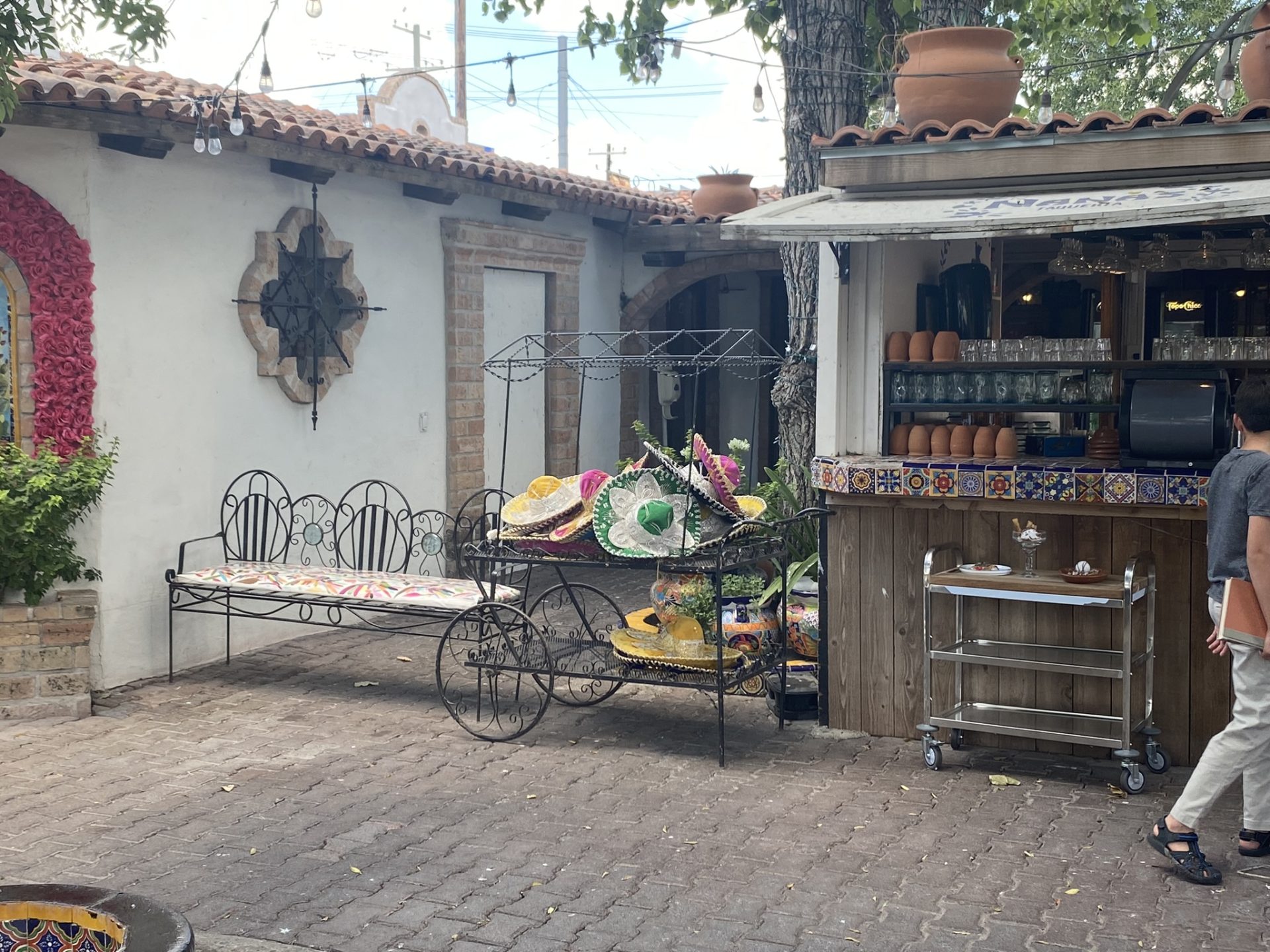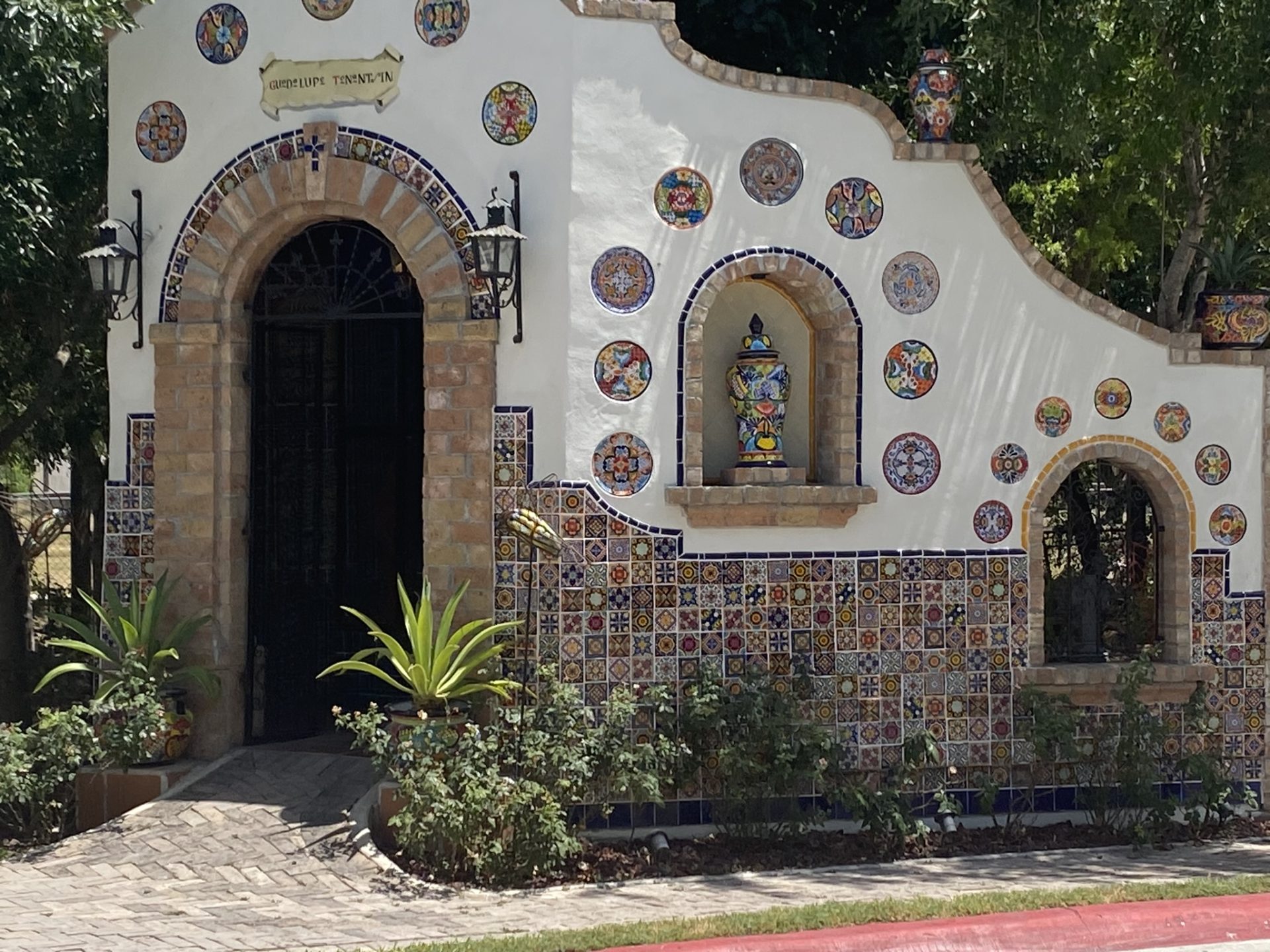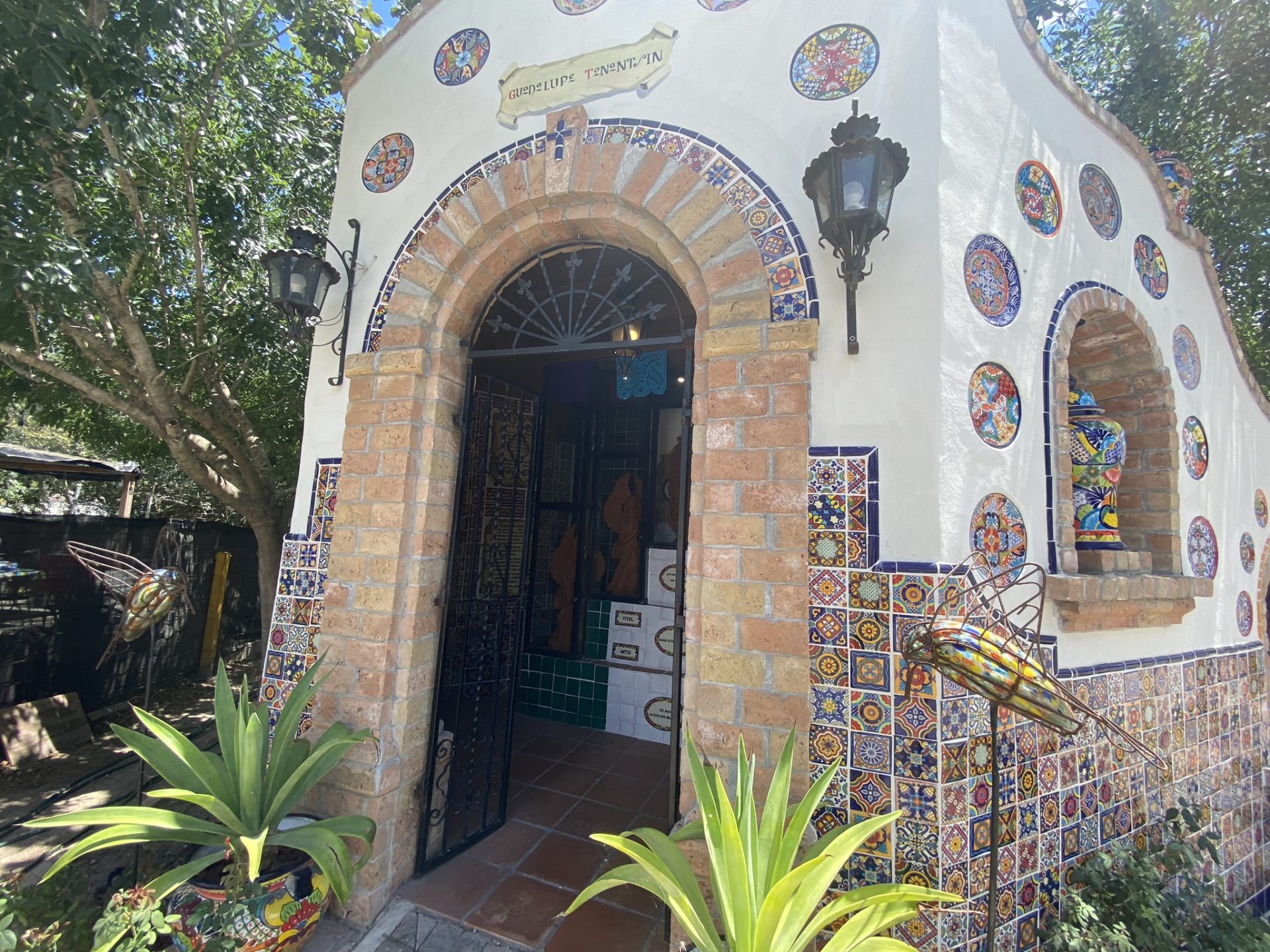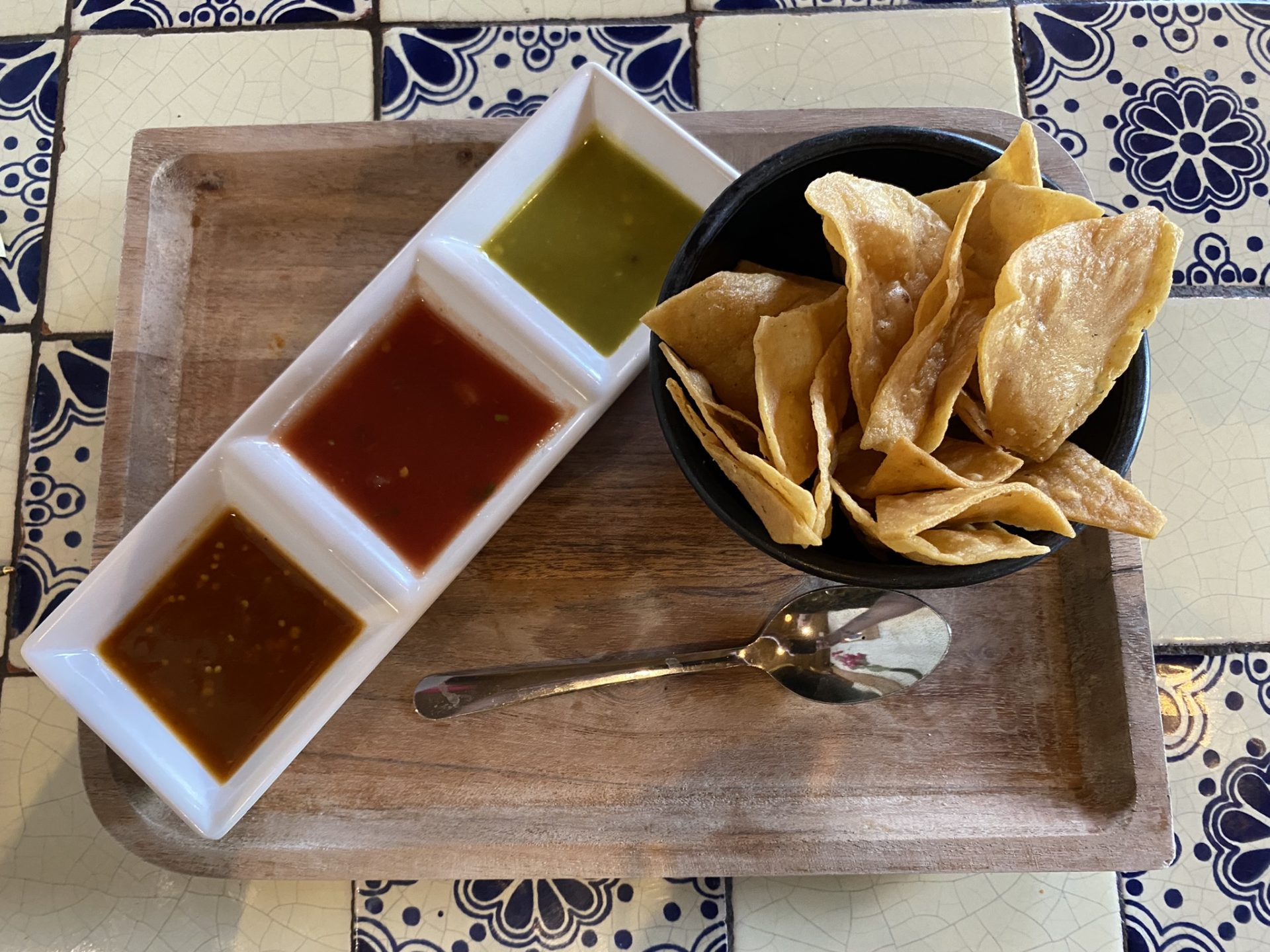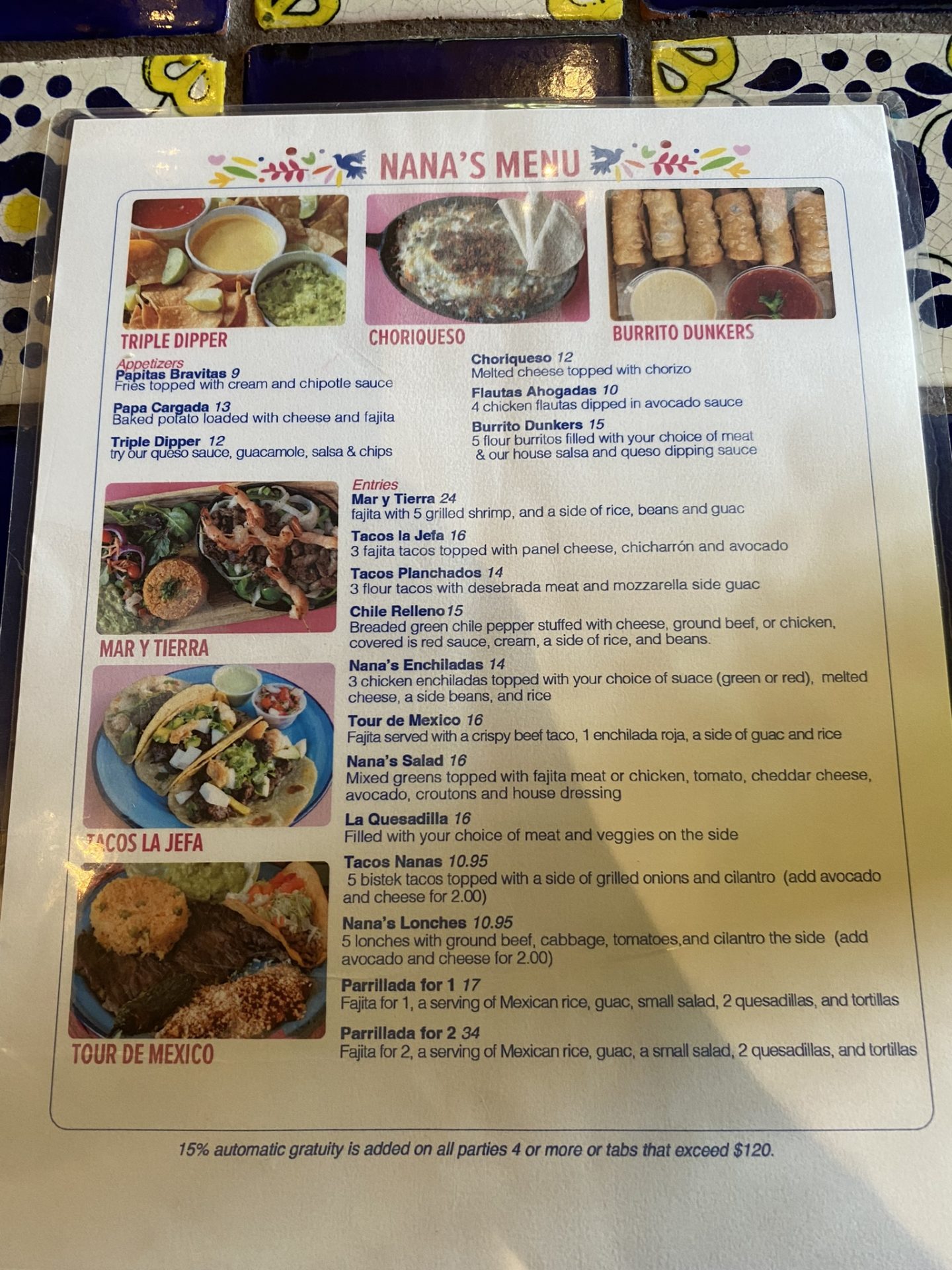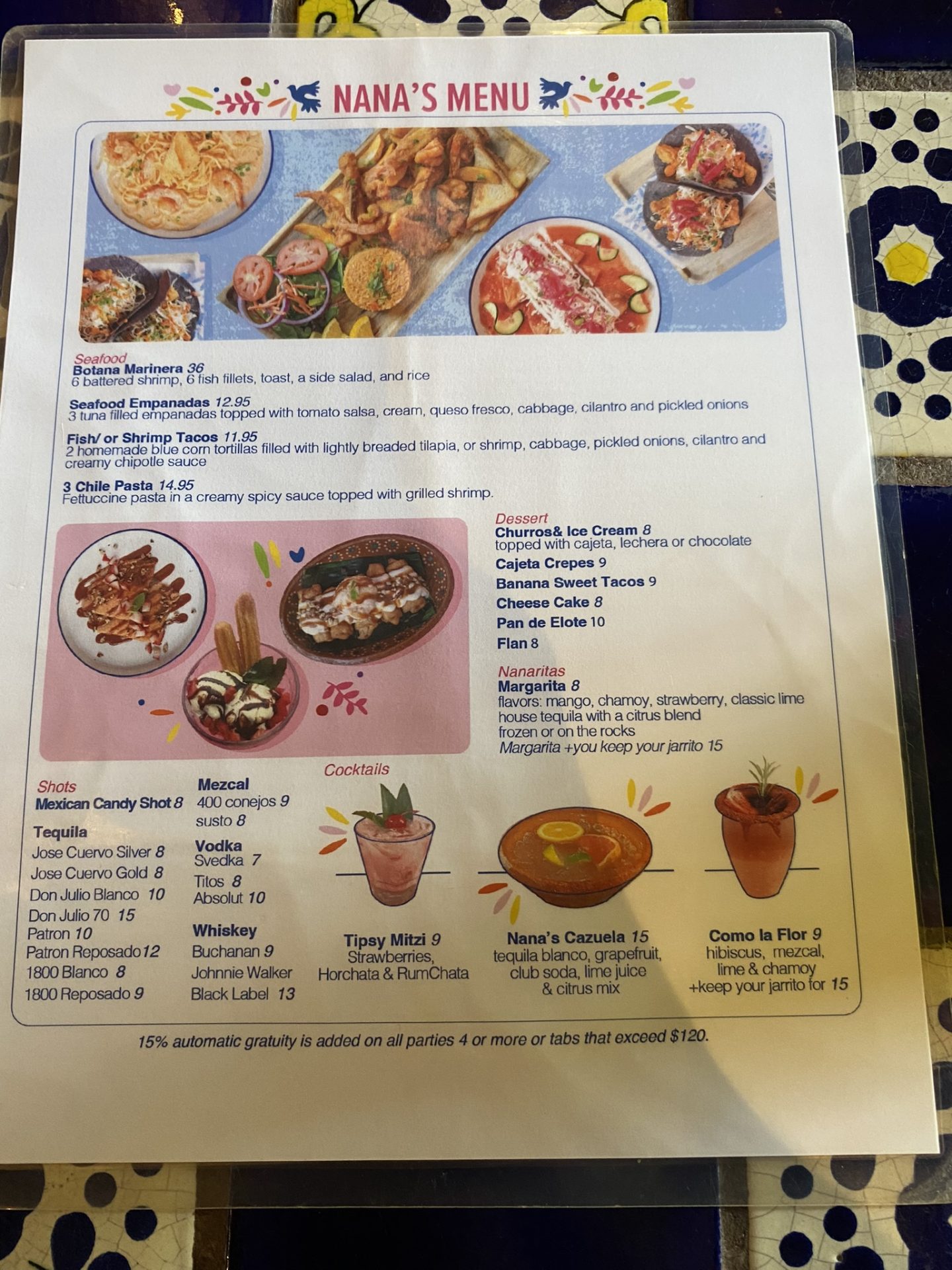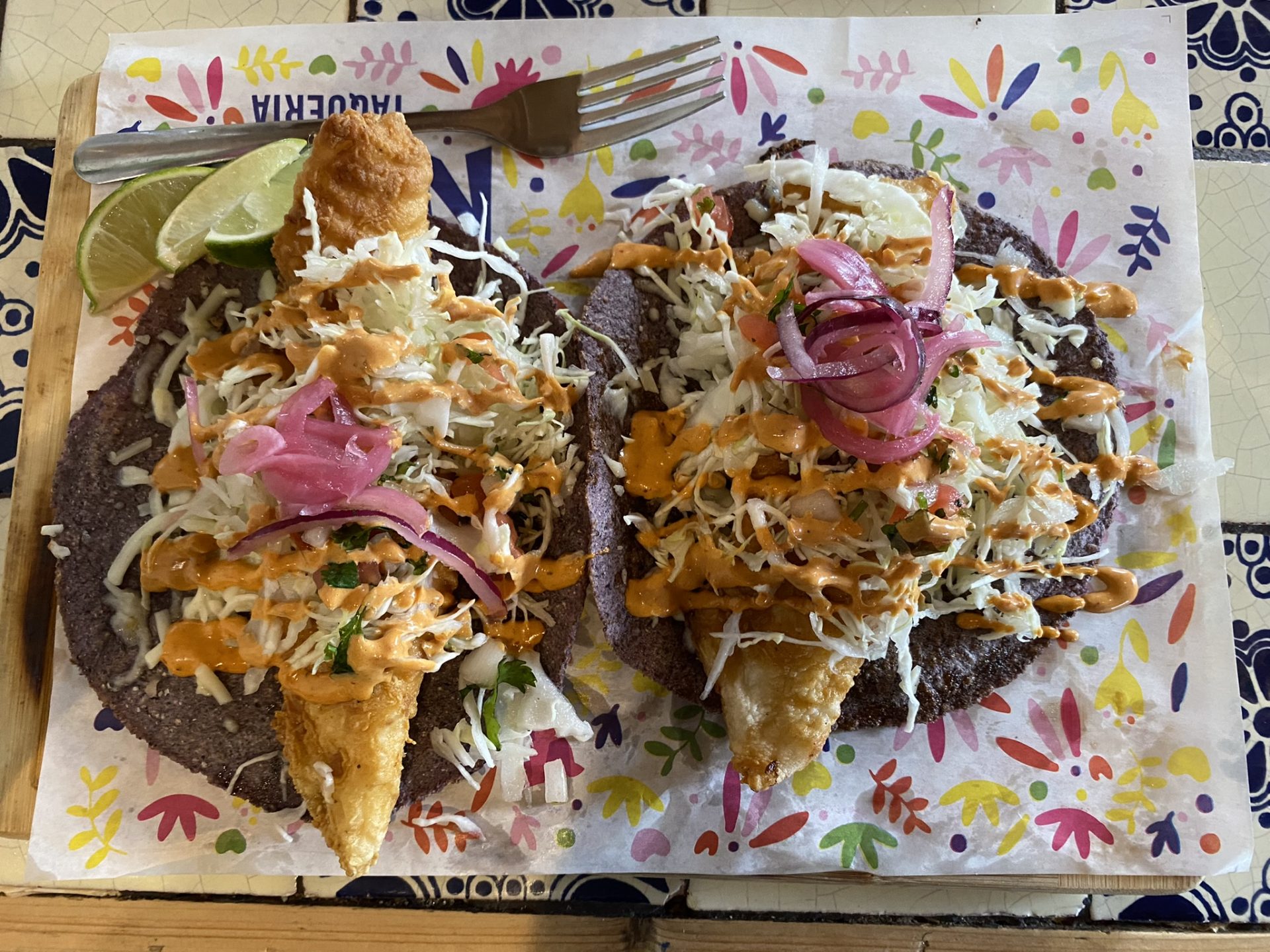|
Only have a minute? Listen instead
Getting your Trinity Audio player ready...
|
WESLACO — Blue corn tortillas.
They lay before me open and beckoning with breaded tilapia and cilantro and pickled onions.
Blue corn tortillas and tilapia invoke a memory of the Purepecha Food Show in Uruapan and the coastal places of Michoacan, Mexico.
But I’m not in Michoacan. I’m at Nana’s Taqueria at 1802 S. International Blvd. in Weslaco, and the music and the food and the scenery draws me into a fine and beautiful dream.
I first visited Nana’s in Weslaco some years ago with friends from the Boys & Girls Clubs of Harlingen. It was not very hot that day, so we sat outside and enjoyed some fine tacos. I remember then the colors and the rather unique layout of this place charmed me, and I thought I would like to return.
I did not return immediately but I sometimes drove past the establishment when Ubering in Weslaco or traveling to Nuevo Progreso. The vibrant colors against the white walls and the boldness of the name “Nana’s” always grabbed my attention and reminded me I needed to visit Nana’s again.
On this warm and sunny afternoon, I finally make the short trip from Harlingen to Weslaco, and I wonder why it took me three or four years to get here when the trip is less than 30 minutes.
But I am here now. As I approach the “taqueria” I see cars filling the lot and I believe I will have a long wait for the staff to serve me, but I do not mind waiting because of the beautiful and unique and intriguing visual appeal of Nana’s.
I see a small but steady stream of people moving toward the entrance. There’s a sign near the entrance, a white sign sort of shining in the warm afternoon of Sunday, and an artist has brought that sign to life with the word “Nana’s” in bold blue. The bees and the birds have animated that sign with a sense of movement, and the red poinsettias invite the viewers into a timeless and soothing place.
Strong Spanish vocals fill the air, and I pass a little shop — part of the Nana’s experience — where jarritos and alebrijes and Mexican candy and tote bags present themselves for purchase.
A sign asks that I wait to be seated. There’s a rack of embroidered mariachi hats and a small bar, and to the right a large open area set with tables. The tables have no one to keep them company and I will not take a seat there because the heat has already creeped into the three digits. I regret not sitting there but I want to enjoy my meal, so a waitress directs me inside and then down a short and wandering hallways, also dancing in the same pattern of colorful flowers and birds on clean white.
I find myself in a smaller dining area separate from the bigger and more crowded dining room, and I sit at a table set with what appears to be Talavera pottery tiles. I am not familiar enough with Talavera pottery to determine if it is indeed Talavera from Puebla or produced at some other factory.
But it has the effect of Talavera and I am feeling very good about Nana’s now.
I observed when I first arrived and then passed the large open area that I had never seen a restaurant laid out in quite this manner and could not determine the origin of this design. There was a sort of chapel with the words “Guadalupe Tonantzin” and I am reminded of the Church of Santa Maria Tonantzintla in Cholula near the City of Puebla.
I recall then the tiles and the design of the structures outside and I realize at this moment at my table this is very much a design from Puebla. Now I am not so lost because I have a sense of place.
At my table I place my order and I see waitresses pass with loads of food on wooden trays for the table behind me where a large family has gathered possibly for the Sunday after church meal. They fill this smaller dining area with joyous conversation in a playful Spanish I can appreciate. It is a Spanish of lovely fluctuations in tone and energy.
In Panama in the early 80s, I worked with a man who was a native of Havana, Cuba. He had immigrated to the United States as a small boy in the early 60s and now had a master’s degree in Latin American studies. He once told me that Mexicans are unique among Latin Americans in that they sing their language in their daily conversations. A lifetime of experiences since that time have confirmed that reflection. I don’t know if Mexicans are the only who speak in this sort of sing-song style, but I like the way these people are speaking behind me.
My meal has arrived. Large blue corn tortillas, homemade, stiff in the manner of a true corn tortilla. I recall now the Purepecha Food Show in Uruapan, Michoacan, Mexico and all the slap-slap-slapping of hands on blue masa as the ladies form their corn tortillas before putting them on the comal. And the tilapia atop these blue corn tortillas takes me back to a pleasant café in Playa Azul on the Pacific coast of Michoacan when I sat at a table on the bare sand beneath a thatched roof and feeling the Pacific wind against my face. I remember looking at a menu and seeing something called “tilapia” and selecting this new dish for my meal as it was unfamiliar and therefore intriguing.
Now I sit here at a table with blue and white Talavera tiles and wrap the blue corn tortilla around copious amounts of tilapia, pickled onions and chipotle sauce, and it is as delicious as anything found south of the border.
Perhaps even more.
Nana’s is open from 11 a.m. to 8 p.m. Monday, 9 a.m. to 8 p.m. Tuesday, 9 a.m. to 10 p.m. Wednesday through Friday, 8 a.m. to 10 p.m. Saturday and 8 a.m. to 5 p.m. Sunday.

